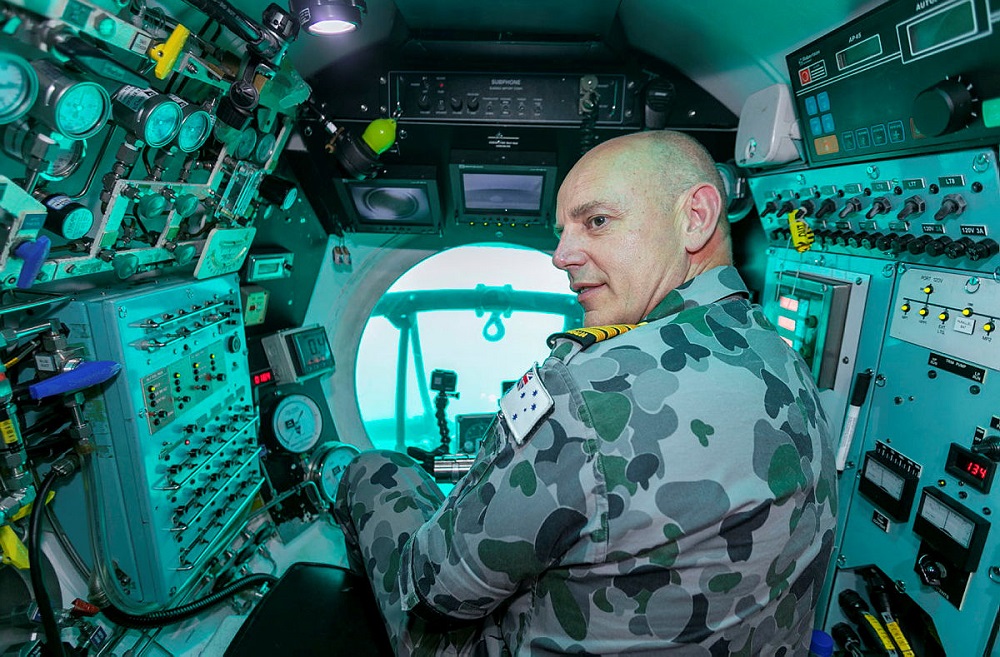
India and Australia have an interest in addressing subsurface challenges in their shared maritime domain. As they and other countries in the region grow their submarine fleets, there’s a critical need to develop underwater search and rescue capabilities and considerable scope to work together.
In the coming years, there will likely be a significant increase in underwater activities in the Indian Ocean, including a major increase in the deployment of military submarines by littoral and non-littoral states. Currently, nearly 15 countries operate submarines in the region. India and Australia are the longest-running operators among Indian Ocean states.
As a consequence, underwater search and rescue will increasingly become an important public good. In 2021, India and Australia quickly mobilised naval assets, aircraft, and underwater search and recovery equipment to help Indonesia find the disabled submarine KRI Nanggala. China also made a high-profile contribution to search efforts. The tragic loss of the Indonesian submarine and its 53 crew underlined the critical need to develop underwater search and rescue capabilities in the Indian Ocean region.
We should also expect a significant increase in commercial activities involving underwater vehicles, crewed and uncrewed. This includes installing and maintaining subsea infrastructure such as communications, power cables and pipelines.
A significant growth in seabed mining may involve submersibles. The International Seabed Authority has already awarded contracts to India, China, Germany and South Korea to mine in the Central Indian Ocean and more contracts are expected.
Conventional maritime search and rescue employs vessels, aircraft and space-based assets to search and respond to incidents across vast areas of ocean. Underwater search and rescue is generally far more difficult and complex, requiring highly specialised skills and capabilities to detect, recover and salvage disabled underwater vehicles and high-value objects like aircraft’s black boxes.
The location and recovery of submarines present challenges due to the environment and the nature of the vessels involved. Specialised vehicles and equipment are often in short supply. The tropical waters of the Indian Ocean also pose unique challenges for underwater sensing. This can lead to significant delays in fixing the location of a disabled submarine for rescue operations to commence.
Building interoperability and coordination between India and Australia could increase the likelihood of successful search and recovery efforts for their and their partners’ submarines.
Both countries are planning significant expansions of their submarine fleets. The Indian Navy currently has several classes of conventional and nuclear-powered submarines. One is in operation, with a second to be commissioned by 2024. Australia, which currently operates Collins-class submarines, plans to acquire or build a fleet of nuclear-powered submarines over several decades as part of the AUKUS arrangement.
While they both possess some submarine rescue capabilities, the further development of a sovereign rescue capability is a key priority for both navies. The Indian Navy now has a third-generation deep submergence rescue vehicle (DSRV) that can reach a disabled submarine at up to 650 meters. In 2018, the Indian Navy demonstrated its rescue capability by ‘mating’ its DSRV with a submarine on the sea floor 100 meters down. The navy has two DSRV systems, providing submarine rescue coverage on India’s east and west coasts.
Australia’s submarine rescue capability is limited. The Royal Australian Navy contracts a private company to maintain, operate and upgrade the LR5 escape and rescue system that provides limited capability and is due to be retired in 2024. Nuclear-powered submarines will likely require more advanced capabilities.
There have been delays in procuring a new deployable submarine escape system following the termination of a contract with a US company. Nevertheless, the RAN and its industry partner conduct regular exercises to ensure they meet the appropriate requirements and are ready to carry out a rescue at short notice.
International cooperation is vital for submarine rescue. There are several ways that India and Australia could collaborate to improve their capabilities through joint rescue exercises, training and capacity-building programs.
In the multilateral space, India could participate in the triennial exercise Pacific Reach sponsored by the Asian Pacific Submarine Conference to enhance rescue skills. India participated in the Australian-hosted 2019 exercise as an observer.
Australia and India are also members of the International Submarine Escape and Rescue Liaison Office (ISMERLO), a NATO-sponsored group that helps coordinate search and rescue operations. The Indian and Australian navies already participate in joint exercises and training programs with other member nations to develop interoperability and share best practices. India and Australia could consider working within ISMERLO to establish a joint coordinated submarine rescue center to share information during emergencies.
Cooperative arrangements could potentially include regional partners like Singapore, which already has agreements for submarine rescue support and cooperation with India and Australia.
The Quad is another forum where Australia and India could discuss with Japan and the US building a regional underwater search and rescue system.
India’s National Institute of Ocean Technology and Australia’s CSIRO could develop innovative solutions such as underwater robotics or deep-sea autonomous vessels to aid in submarine rescues.
As underwater activity increases, so too will the reasons and opportunities for Australia and India to join forces to develop underwater search and rescue capabilities.
This article was written as part of the Australia India Institute’s defence program undertaken with support from the Department of Defence. All views expressed in this article are those of the author only.

